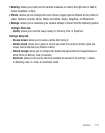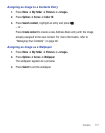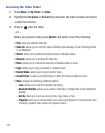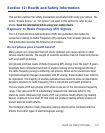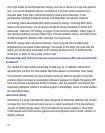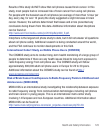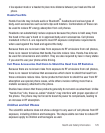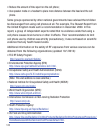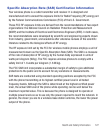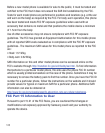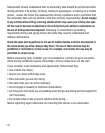
Health and Safety Information 123
Results of this study did NOT show that cell phones caused brain cancer. In this
study, most people had no increased risk of brain cancer from using cell phones.
For people with the heaviest use of cell phones (an average of more than ½ hour per
day, every day, for over 10 years) the study suggested a slight increase in brain
cancer. However, the authors determined that biases and errors prevented any
conclusions being drawn from this data. Additional information about Interphone
can be found at
http://www.iarc.fr/en/media-centre/pr/2010/pdfs/pr200_E.pdf.
Interphone is the largest cell phone study to date, but it did not answer all questions
about cell phone safety. Additional research is being conducted around the world,
and the FDA continues to monitor developments in this field.
International Cohort Study on Mobile Phone Users (COSMOS)
The COSMOS study aims to conduct long-term health monitoring of a large group of
people to determine if there are any health issues linked to long-term exposure to
radio frequency energy from cell phone use. The COSMOS study will follow
approximately 300,000 adult cell phone users in Europe for 20 to 30 years.
Additional information about the COSMOS study can be found at
http://
www.ukcosmos.org/index.html
.
Risk of Brain Cancer from Exposure to Radio Frequency Fields in Childhood and
Adolescence (MOBI-KIDS)
MOBI-KIDS is an international study investigating the relationship between exposure
to radio frequency energy from communication technologies including cell phones
and brain cancer in young people. This is an international multi-center study
involving 14 European and non-European countries. Additional information about
MOBI-KIDS can be found at
http://www.creal.cat/programes-recerca/en_projectes-creal/view.php?ID=39.



